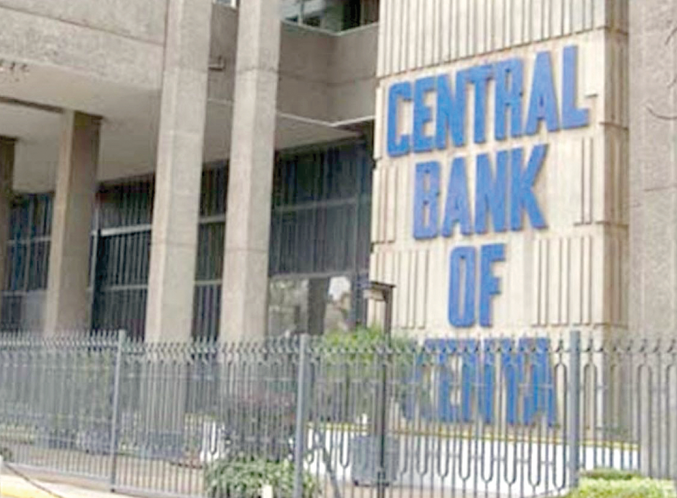Credit drops due to tighter monetary policy – experts

Kenya’s private sector saw a surge in non-performing loans (NPLs) as credit shrank by 1.4 per cent in the 12 months to December 2024, a sharp reversal from the 13.9 per cent growth recorded in 2023.
Central Bank of Kenya (CBK) data shows that this decline in credit follows the combined effects of tight monetary policy, elevated lending rates, and the appreciation of the shilling, which reduced the value of foreign currency-denominated loans.
“This decline is mainly due to the reduced borrowing capacity of businesses and households, driven by higher interest rates seen in 2024 and the lower disposable income,” investment analysts from Cytonn said. In the review period, total credit extended to businesses stood at Sh3.9 trillion, with the banking sector still dominating at 81.2 per cent of total lending, while microfinance institutions and Savings and Credit Cooperative Organizations (SACCOs) accounted for 18.8 per cent.
Surge in NPLs
However, a surge in non-performing loans (NPLs) to Sh672.6 billion, an 8.3 per cent increase year-on-year forced banks to adopt a more cautious stance, further constraining credit availability.
The contraction contrasts the previous five-year trend, where private sector lending had grown at a compound annual growth rate (CAGR) of 6.5 per cent. Several key sectors bore the brunt of the slowdown. Mining and quarrying suffered the steepest decline in credit uptake, falling by 22.7 per cent, followed closely by finance and insurance (-21.2 per cent), other activities (-18.1 per cent), and manufacturing (-9.4 per cent).
In contrast, private households saw a 9.2 per cent rise in credit uptake, while agriculture, consumer durables, and trade recorded modest gains of 5.2 per cent, 3.3 per cent, and 2.3 per cent, respectively. The uneven distribution of credit growth indicates a shift lending, with banks favoring less risky segments while pulling back from sectors facing economic uncertainty.
The tightening of monetary policy was a key driver of the credit squeeze. In February 2024, the CBK raised the Central Bank Rate (CBR) by 50 basis points to 13 per cent in a bid to tame inflation and stabilize the shilling. The move, coupled with persistently high lending rates, discouraged borrowing.
Even as CBK later reversed course, cutting the CBR by 225 basis points to 10.75 per cent between June 2024 and February 2025, banks remained hesitant to ease lending conditions. Average lending rates stood at 16.4 per cent in February 2025, reflecting caution among financial institutions amid rising loan defaults. In addition, the CBK reduced the Cash Reserve Ratio (CRR) by 100 basis points to 3.25 per cent in February 2025 to release more liquidity into the banking system, a measure expected to support future credit expansion.
The appreciation of the shilling in 2024 also played a crucial role in the credit contraction. Many businesses that had taken loans in foreign currencies saw the value of their credit obligations shrink in local currency terms, contributing to a decline in the total outstanding private sector credit. The stronger shilling, while beneficial in easing import costs and stabilizing inflation, inadvertently reduced the demand for foreign currency loans, especially among businesses reliant on external financing.
The slowdown in credit expansion has significant implications for Kenya’s economy, where the private sector, dominated by small and medium-sized enterprises (SMEs) drives growth and job creation. SMEs account for 90 per cent of private businesses and employ 88 per cent of the workforce, yet they continue to struggle with access to financing.
According to the Cytonn analysts, as the government aims to reduce its fiscal deficit, fostering a supportive environment for private sector growth, especially for small businesses, will be crucial for increasing revenue collection.
“Achieving this requires policy reforms to strengthen the credit market and the introduction of sector-specific funds to drive business growth in key industries like finance, agriculture, manufacturing, and transport,” the Cytonn analysts said.
With 95 per cent of business funding still reliant on bank credit, compared to just 5 per cent from capital markets, Kenya’s financial ecosystem remains heavily skewed toward traditional lending channels. In contrast, developed economies see only 40 per cent of business credit coming from banks, with 60 per cent sourced from alternative financing mechanisms such as venture capital and bond markets income trusts, reflecting a preference for economic stability in Kenya. It is also essential to consider macroeconomic factors, such as inflation, interest rates, and economic growth, which can significantly impact unit trust performance. For example, rising interest rates may benefit MMFs and fixed income funds but negatively affect equity funds.
Discipline and consistency are crucial for success in unit trust investments. Regular contributions to a unit fund, regardless of market fluctuations, can help investors achieve their financial goals and ensure long-term success.
“One key aspect that would be able to determine whether or not one can be successful from a long-term perspective, just in terms of gathering wealth would be discipline, and the ability to just be goal-oriented,” said Oloo.
In Kenya, unit trust funds and assets are governed by the CMA and regulated under the Capital Markets Collective Investments Schemes Regulations, 2001.















